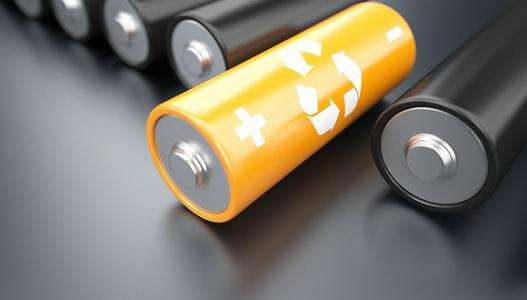Lithium Battery Failure Rate-What You Need To Know?
Sep 02, 2019 Pageview:2209
Lithium batteries are known as lithium-metal batteries, which are primary batteries that use metallic lithium as an anode. These batteries stand apart from other types of batteries available out there due to their low cost per cycle and high energy density. Depending on the chemical compounds and design used, lithium cells are capable of producing voltages that range from 1.5v to 3.7v. Lithium is quite useful as its ones can be easily arranged to move between the cathode and the anode. More importantly, they are found in a wide range of portable consumer electronic devices and in electric vehicles too.
Without a doubt, lithium batteries are generally used to replace lead-acid batteries as they have same charging voltages. What’s make lithium batteries unique from other batteries is that they don’t require absorption charge or to keep hold in a constant voltage for a significant time period. In short, these batteries offer several advantages over others. But, it’s still good to know the failure rate of lithium battery before you use it for your application.
So, here is a complete guide on what you need to know about lithium battery failure rate and several tips to help you boost lithium batteries reliability.
Reliability And Failure Analysis Of Lithium Battery
Safety of lithium batteries has attracted great legal and media attention. However, any energy storage device has a risk. In other words, all batteries including lithium ones carry a safety risk and battery manufacturers are obligated to fulfill safety requirements. The lithium battery is safe, but a lot of people are using lithium-based batteries, failures are sue to happen. However, lithium batteries have a quite low failure rate.
The important thing you need to note that there are two types of battery failures. One happens at a predictable interval-per-million and is associated with a design flaw including the separator, electrolyte, electrode or processes. The more hard failures are random events that don’t point to a design flaw. Instead, it may be an event like charging at not recommended temperature.
Quality lithium batteries are safe if you use them as intended. Nevertheless, a high number of fire or heat failures have been seen in consumer products that utilize non-certified batteries. For instance, fire or battery failures reported in the Samsung Galaxy Note 7 were because of the manufacturing defect, which had been resolved.
Thus, incorrect uses of lithium batteries make your battery fail. If you’re wondering what are incorrect uses, then they include excessive vibration, charging batter below freezing and elevated heat. Lithium-based batteries can’t fully be discharged and need to be stored within a remaining charge.
In short, lithium batteries are safe if manufactured by a reputable battery manufacturer.
However, there are also certain things you should do at your end to boost your battery reliability and to reduce the failure rate. Continue reading this post to know how you can achieve that.
How to Improve Lithium Battery Reliability?
Now, there are several things you can do to enhance the reliability of your lithium battery. So, let’s get to know about them -
· Keep your battery at room temperature
It’s always recommended that you should keep your battery at room temperature that is between 20 and 25 degrees Celsius. Do you know that worst thing that can occur to lithium-based batteries is to have a complete charge and be subjected to high temperatures? Thus, don’t charge your battery in the extremely hot temperature.
· Avoid full discharges and allow partial ones
Unlike other batteries, lithium batteries don’t have a charge memory. It means that deep-discharge cycles aren’t required. Also, it’s good for the battery to utilize partial-discharge cycles. But, here one exception comes in - battery experts recommend that after thirty charges, you should let lithium-based batteries almost completely discharge.
· Avoid completely discharging the battery
If the lithium batteries are discharged below 2.5v/cell, then a safety circuit designed into the battery opens and your battery appears to be dead. For safety reasons also, don’t recharge completely discharged the battery if it has been stored in that condition for numerous months.
What You Can Do To Reduce Lithium Battery Failure Rate?
We all know that the causes of Lithium Battery failure involve:
· Puncture
· Overcharge
· Overheating
· Short-circuit
· Internal cell failure
· Manufacturing deficiencies
Every year, many reports are filed which involve these battery failures in the laptop, desktop, mobile phones, etc. But you can take some action that can have a good impact on the usage of these batteries. It will also reduce the failure rates of these batteries. So, let’s take a look at them.
· If you have separate batteries which don’t come with devices, it will be better if you carry them in a protective case, a plastic bag or tape so that the terminals can be isolated.
· A battery always shows signs of damage before it fail abruptly. So, all you need to do is to inspect the battery pack from time to time. Also, keep in mind to never use a puffed or damaged battery.
· Always maintain the ideal operating range for the battery pack during charging and discharging. The extreme conditions can have a large impact on the batteries even after they are protected from it. So, never expose the pack to extreme cold or extremely hot conditions.
· If the battery is showing evidence there thermal runaway failure is happening, then be cautious and keep the extinguisher ready if the fire ignites.
· To avoid failure, remove the battery from the device and disconnect it from the power source if there are any signs of damage.
· Always store the battery away from the combustible materials.
· Keep the room ventilated in which you are placing the Lithium batteries. This will make sure that the harmful gases can escape and it will make sure that the damage is minimal even after a leak.
All these points are simple safety precautions that need to be taken whenever you are taking a lithium battery into your hands. The consumer-grade electronics might not come with all the warnings, but you need to make sure that you handle these batteries carefully.
- Prev Article: Lithium Battery Construction-How to Make a Lithium Battery
- Next Article: Lithium Battery Risk Assessment-Most Important Parts
Leave Message
Hottest Categories
-
Hottest Industry News
-
Latest Industry News











